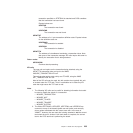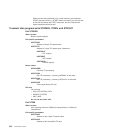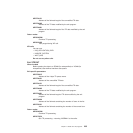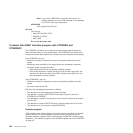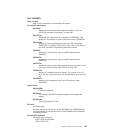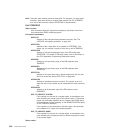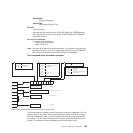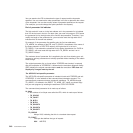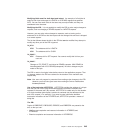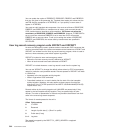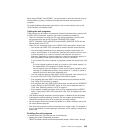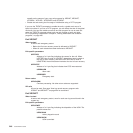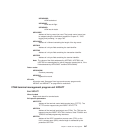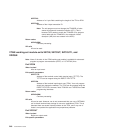X'04' READQ
X'06' DELETEQ.
TD_BITS1
Existence bits that define which arguments were specified. To obtain
the argument associated with a keyword, you need to use the
appropriate address from the command-level parameter structure.
Before using this address, you must check the associated existence bit.
If the existence bit is set off, the argument was not specified in the
request and the address should not be used.
X'80' Set if the request contains an argument for the QUEUE
keyword. If set, TD_ADDR1 is meaningful.
X'40' Set if the request contains an argument for any of the INTO,
SET, or FROM keywords. If set, TD_ADDR2 is meaningful.
X'20' Set if the request contains an argument for the LENGTH
keyword. If set, TD_ADDR3 is meaningful.
X'02' Set if the request contains an argument for the SYSID keyword.
If set, TD_ADDR7 is meaningful.
TD_BITS2
Two bytes not used by transient data.
TD_EIDOPT5
Indicates whether certain keywords were specified on the request.
X'01' SET (and not INTO) was specified.
TD_EIDOPT6
One byte not used by transient data.
TD_EIDOPT7
Indicates whether certain functions and/or keywords were specified on
the request:
X'40' WRITEQ specified
X'80' READQ specified
X'C0' READQ(nosuspend) specified
X'04' DELETEQ specified.
TD_ADDR1
is the address of a 4-byte area containing the name from QUEUE.
TD_ADDR2
is the address of one of the following:
v A 4-byte address from SET (if the request is READQ and TD_EIDOPT5
indicates that this is SET).
v Data from INTO (if the request is READQ and TD_EIDOPT5 indicates that
this is not SET). You cannot modify this bit in your user exit.
v Data from FROM (if the request is WRITEQ).
TD_ADDR3
is the address of one of the following:
v The halfword value of LENGTH (if the request is READQ or WRITEQ).
Warning: For requests that specify INTO, do not change the value of
LENGTH to a value greater than that specified by the application. To do so
causes a storage overlay in the application.
Chapter 1. Global user exit programs 241



